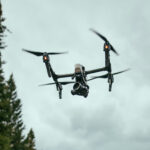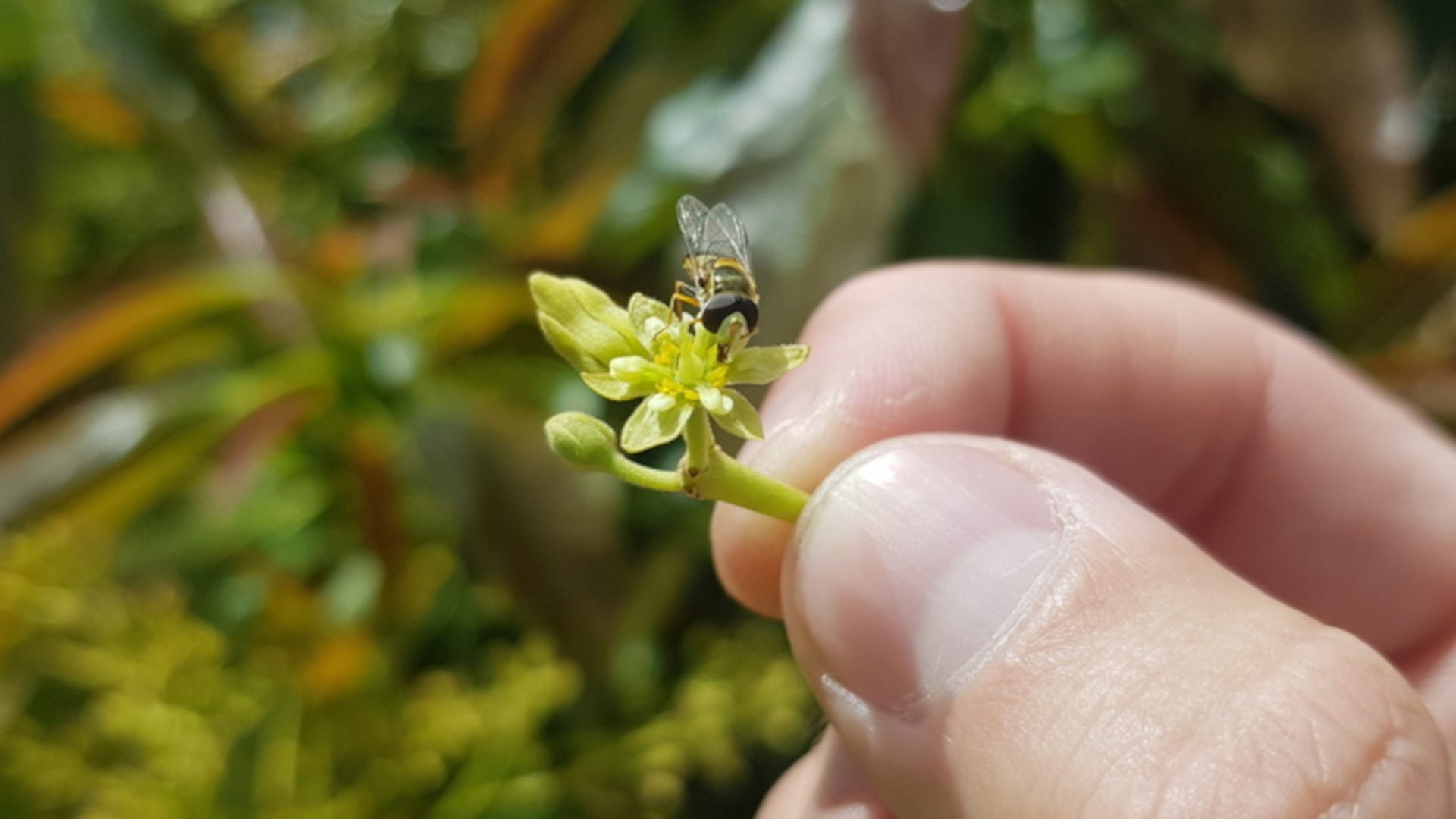The Genetic Net: Tracking Insects — and Biodiversity — with eDNA
One sweltering day in southwest Australia, standing in a flowering avocado orchard, a cloud of hoverflies enveloped Joshua Kestel. The air practically droned. It was 2020, and Kestel, who studies pollination in agricultural crops as a Ph.D. candidate at Curtin University in Perth, remembers feeling their overwhelming presence.
“I was like, ‘My goodness, these guys can effect change,” he said. “Because when they’re there in big numbers, boy, they are so amazing, and they’re so diverse, and there’s so many of them.”
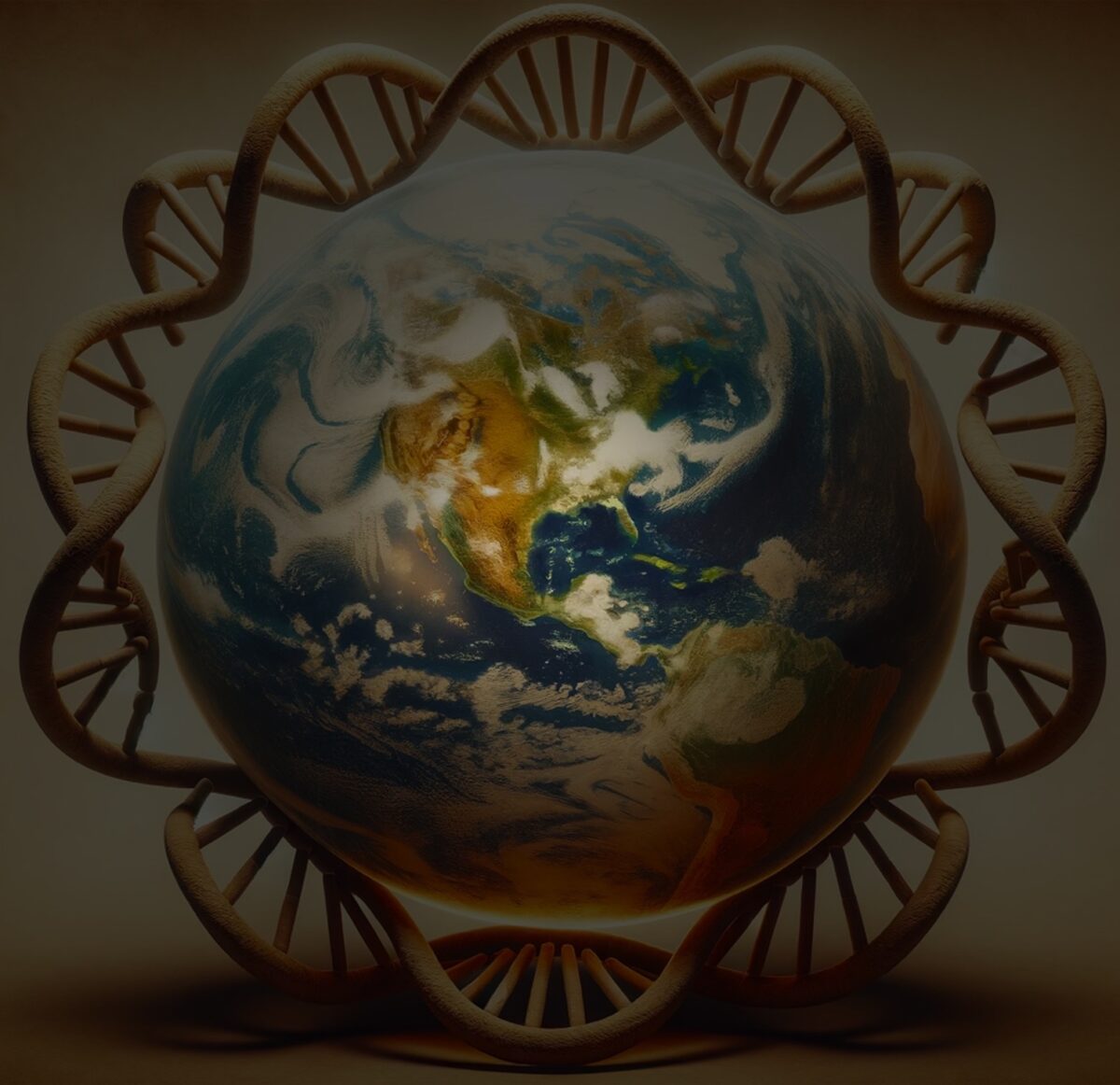
Until there aren’t. Insects, among the most diverse forms of life on earth, make up an estimated one-half to three-quarters of all known animals. The data on the decline appear stark, tantamount to what some observers have called the “insect apocalypse.” One oft-cited 2017 study, which measured 118 pounds of dead insects, showed a more than 75 percent decline in flying insects, by weight, in German nature protection areas over 27 years. Another 2020 paper by an ecologist who drove the same roads in Denmark noted far fewer insects splattered across his windshield in the span of 20 years. And a subsequent, widely criticized review paper noted rates of decline that could lead to the extinction of 40 percent of insect species in the coming decades.
But there are outliers. One 2020 study, for instance, found no net decline, using data from several long-term ecological research sites in the U.S. David Wagner, an entomologist at the University of Connecticut, took issue with the no-net-decline study’s methods. In a paper he co-authored outlining the crisis, which reviews previously published research, Wagner suggests more of a slow erosion. While “apocalypse” implies a single catastrophic elimination event, Wagner puts the estimated losses closer to 1 to 2 percent per year. Still, he added, that means, “we’re going to be missing half the tree of life in just one human lifetime.”
Despite the varying estimates, entomologists generally agree that more research and action is needed. Few tools measure biodiversity on a grand scale, and there’s still much scientists don’t know despite the intrinsic role that insects, particularly insect pollinators, play in ecosystems. Most exist in the realm of so-called dark taxa — organisms with neither a name nor a formal description. Even with 10,000 new species detected a year, Simon Leather, the late author and entomologist, wrote in “Insects: A Very Short Introduction,” “it will be at least another 400 years before all have been named and described, and of course we have to find them first.”
“We’re going to be missing half the tree of life in just one human lifetime.”
One newly emerging search tool: environmental DNA, or eDNA. When insects visit a flowering plant, for instance, they often leave behind tiny fragments of themselves. Researchers are beginning to sleuth out these faint genetic traces (often by swabbing, or otherwise extracting, eDNA off of the flower or leaf surface). eDNA can then be computationally compared to identify species, such as a particular bumble bee — or to census an entire community of insects.
When Kestel used the technique in an avocado orchard in 2020, he and colleagues found that the flowers were overwhelmingly dusted in hoverfly eDNA and not the honey bees farmers rent out for the express purpose of pollinating their orchards. In a larger study across two orchards that’s currently being prepared for publication, however, Kestel said the detection of native flies (including hoverflies and other species) was nearly equal to that of honey bees. “These native pollinators,” he wrote in an email to Undark, “therefore may have an equal or even greater impact on pollination.” Instead of spending hours in an orchard looking at insects, collecting eDNA from, say, 100 flowers at 10 orchards, could produce a week’s worth of data from multiple sites. Indeed, conducting a globe- or continent-wide search for insects that were smaller than a paperclip seemed practically inconceivable, especially, as Kestel half-joked, given that the sum total of expert entomologists might fill a single office cubicle.
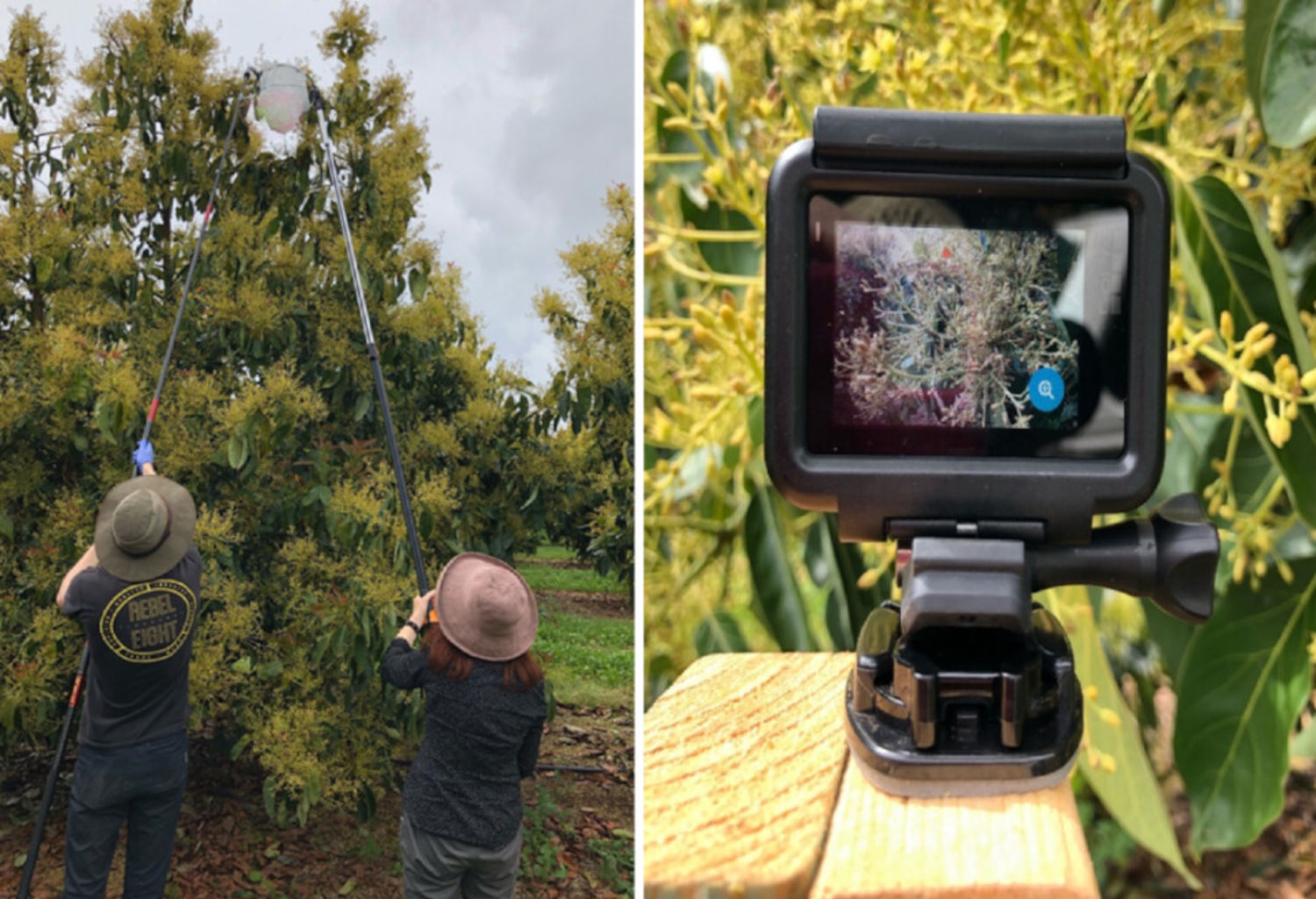
“It’s like what AI has allowed for and ChatGPT,” he said of eDNA. “It’s the scale that you increase so rapidly. And, to answer a global question, you need global tools.”
Is human activity shaking the tree of life, or irreversibly choking it to death? Could old-school tools, such as the laborious and time-honored tradition of swinging nets around like entomologists have been doing since the 18th century, answer some of the most pressing questions about the future of global biodiversity? Or is there a better way?
David Pilliod, a U.S. Geological Survey ecologist in Boise, Idaho, is among those exploring the use of eDNA to get at some of these bigger questions. The existing data sets provide some insight into the scope and scale of insect decline. But, he said, “there’s more work to be done if we want really strong empirical evidence that insect communities are collapsing.”
Pilliod currently oversees a collaboration with several institutions, and he’s in the thick of it — poised to publish data from the first two years of a planned multi-year project. One aspect involves Bombus affinis, the rusty patched bumble bee. It’s an endangered species that federal agencies are tasked with keeping tabs on. Traditional methods, like walking around with a net, can sometimes be frustratingly hit-or-miss, he said. By analyzing eDNA collected off wildflowers, eDNA could serve as a more sensitive and powerful tool to observe and monitor the species.
Another upshot: Unlike windshields or traps that sacrifice and kill what’s being studied, eDNA doesn’t harm the test subject. This is especially useful when scientists are working with extremely rare or endangered organisms. “What’s been done for hundreds of years, is you go out and you collect the animal and then you identify it,” Pilliod said. “There’s whole monitoring programs that suggested that we need to basically be killing tens of thousands — or hundreds of thousands — of bees to understand the status of bees. So we’re looking for new tools to move away from that. And eDNA could be one of them.” (Wagner agreed but said for more abundant species that are not imperiled, “under-collecting is actually more of a threat.”)
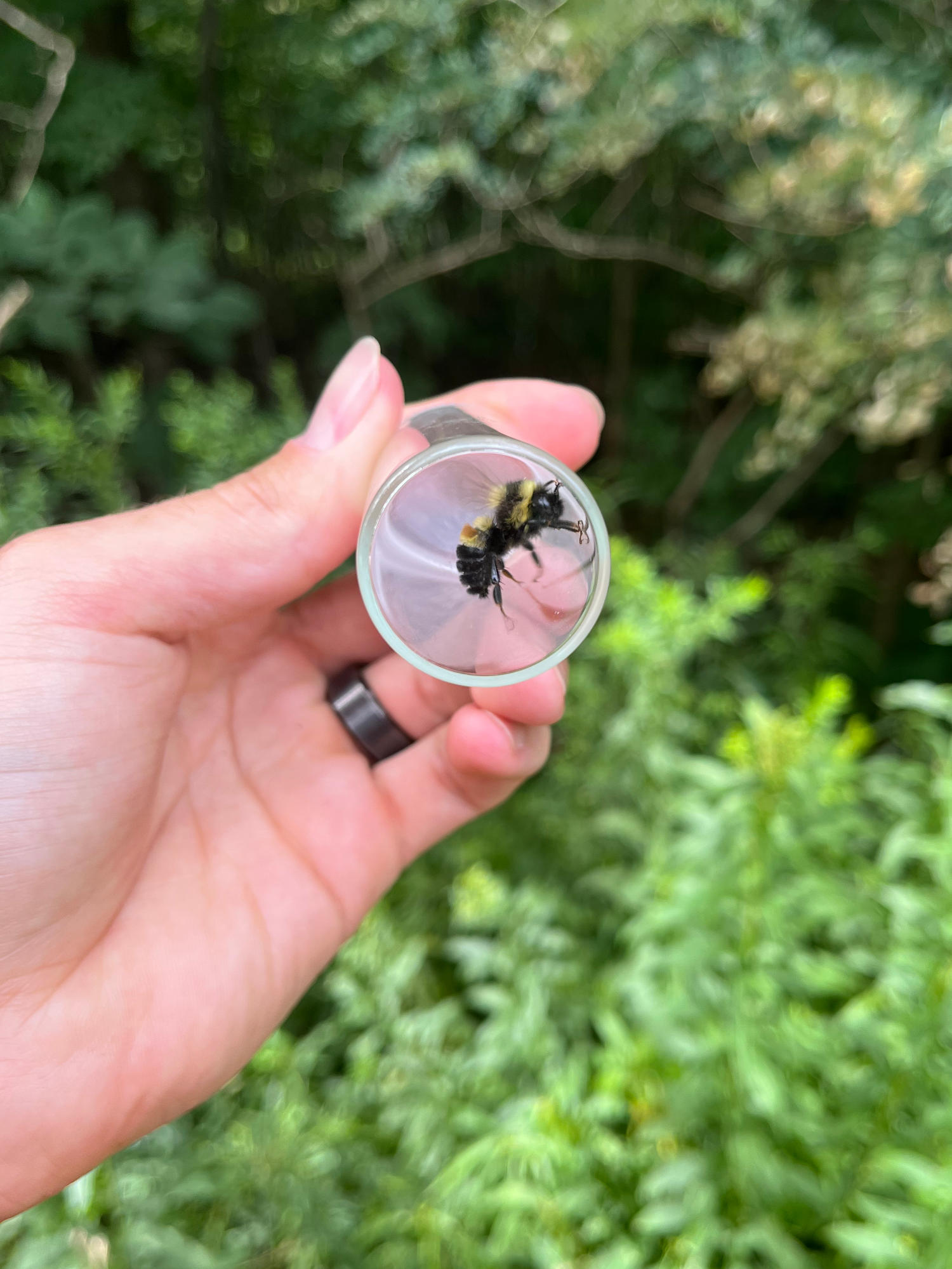
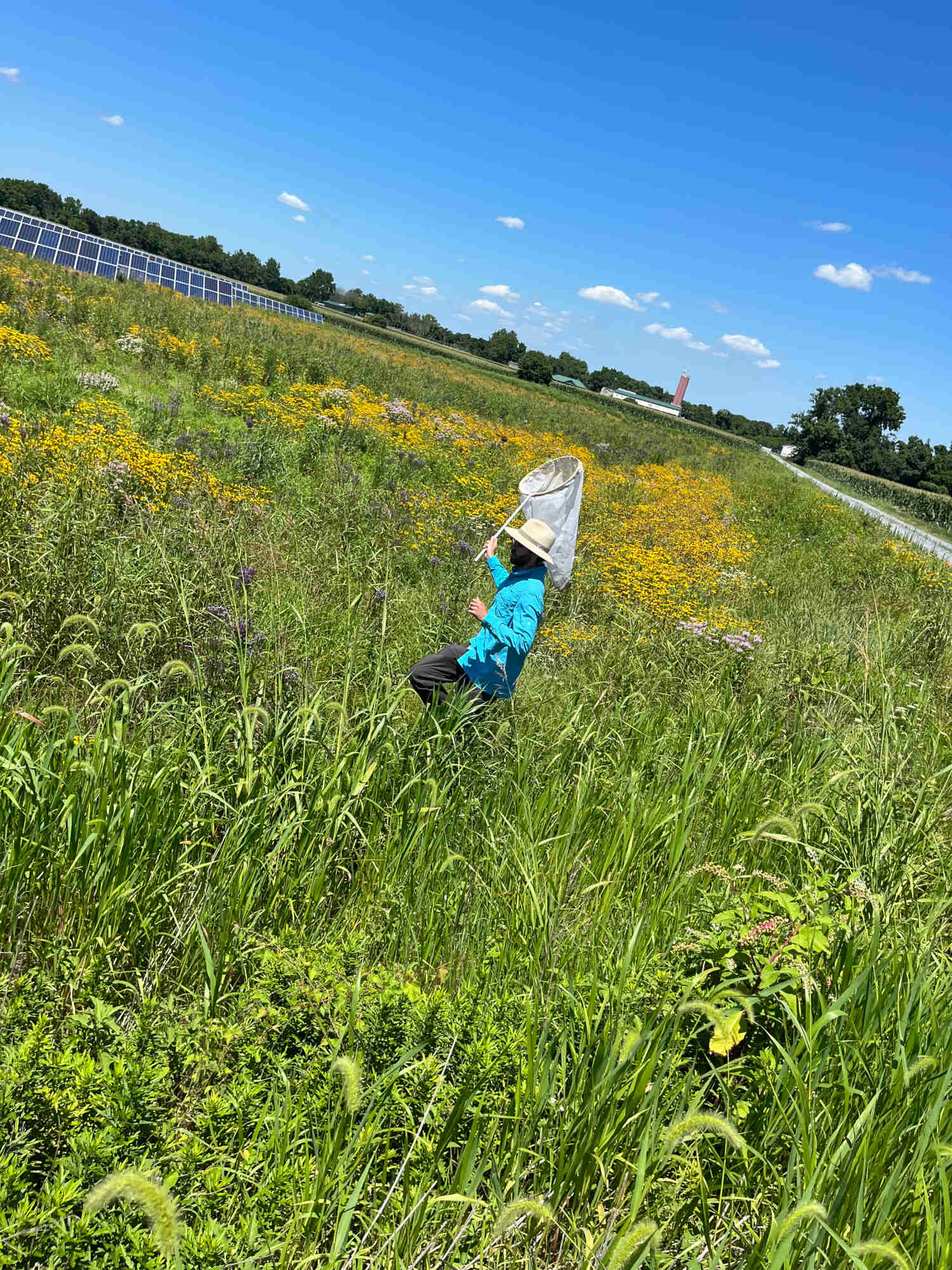
Still, the entire field of terrestrial eDNA remains in its infancy, especially when compared to more established work in aquatic ecosystems. Pilliod acknowledges that they’re still sorting out some basic methodological kinks. Unlike fish eDNA in a stream, terrestrial eDNA does not come in a “nice liquid medium,” he said, and so the sampling teams rinse flowers and then analyze the resulting eDNA in a liquid solution. Wildflower samples also contain a lot of non-target DNA, particularly from flowers; by comparison, the target bee eDNA is often found at very low concentrations, which can make detection difficult.
Moreover, when a bumble bee deposits eDNA on a flower petal, that genetic footprint presumably degrades in the sun, although it’s not exactly clear yet how quickly. How many hours or days do flowers cling onto these dusty memories of their insect pollinators? Bumble bees, which are covered in fuzzy hairs, may leave behind a more detectable trace, in greater abundance, than, say, the less hirsute bald-faced hornets. “We don’t know how long the DNA lasts,” Kestel said. “We don’t know the different deposition rates of different feeding behaviors. There’s many, many questions that exist for this, but that is what makes it so exciting.”
Perhaps the biggest issue is simply the staggering biodiversity of insects. Kestel’s research suggests that eDNA captures most of the insect diversity, compared to pan traps (which drown insects) or logging digital videos, but no single tool captures all the known insect biodiversity in the orchard.
In the Western U.S., Pilliod pointed out that while genetic libraries are full of information about grizzly bears, wolves, and other charismatic megafauna, there’s generally less on the smaller and more obscure species, like bald-faced hornets. Without a known reference sample, eDNA can only go so far in terms of taxonomic identification.
In other words, if eDNA resembles a supermarket checkout, then the scanner can track some barcodes back to the bread aisle but can’t always identify the loaf as Oroweat-brand multigrain. But there are far more species of bees in North America than types of bread at the average supermarket: There are an estimated 5,000 species, and, as if to underscore just how far researchers have to go in barcoding them all, one ongoing effort called the Beenome100 attempts to sequence the DNA of 100 species this year.
“There’s whole monitoring programs that suggested that we need to basically be killing tens of thousands — or hundreds of thousands — of bees to understand the status of bees.”
Simply put, the DNA libraries used to ID and compare eDNA collected in the field rarely represent the full spectrum of insect biodiversity, particularly in areas with the greatest diversity. As Karen Goodell, an ecologist at Ohio State University, said: “You go to a place like the tropics, or any highly biodiverse places, a lot of those insects aren’t even — we don’t even know what they are yet. We haven’t described the species, so we can’t really hope to have the genomes or even the genes available to match up with eDNA.”
Goodell and Rodney Richardson, formerly an assistant professor at the Appalachian Laboratory at the University of Maryland Center for Environmental Science, led a study published in late 2023 that demonstrated pollinators’ DNA isolated from flowers could be used to identify species. More recently published surveys show that central Appalachia remains a refuge for the rusty patched bumble bee. Richardson said unpublished data suggests eDNA offered “even odds” comparable with netting. The difference: the molecular technique not only scaled more readily to thousands of sites, it required practically no expertise. “Anybody can follow a one-page protocol and collect a sample of flower eDNA,” said Richardson, who now works at Western EcoSystems Technology, Inc., an environmental consulting firm. “Not anybody can go out in the field and identify, you know, a Bombus terricola.” But, in their original peer-reviewed survey, which showed the highest density of bee detections per eDNA sample thus far, the findings were more measured: The old-school approach — tromping around on foot, capturing bees and butterflies in nets — was more efficient for characterizing insect communities.
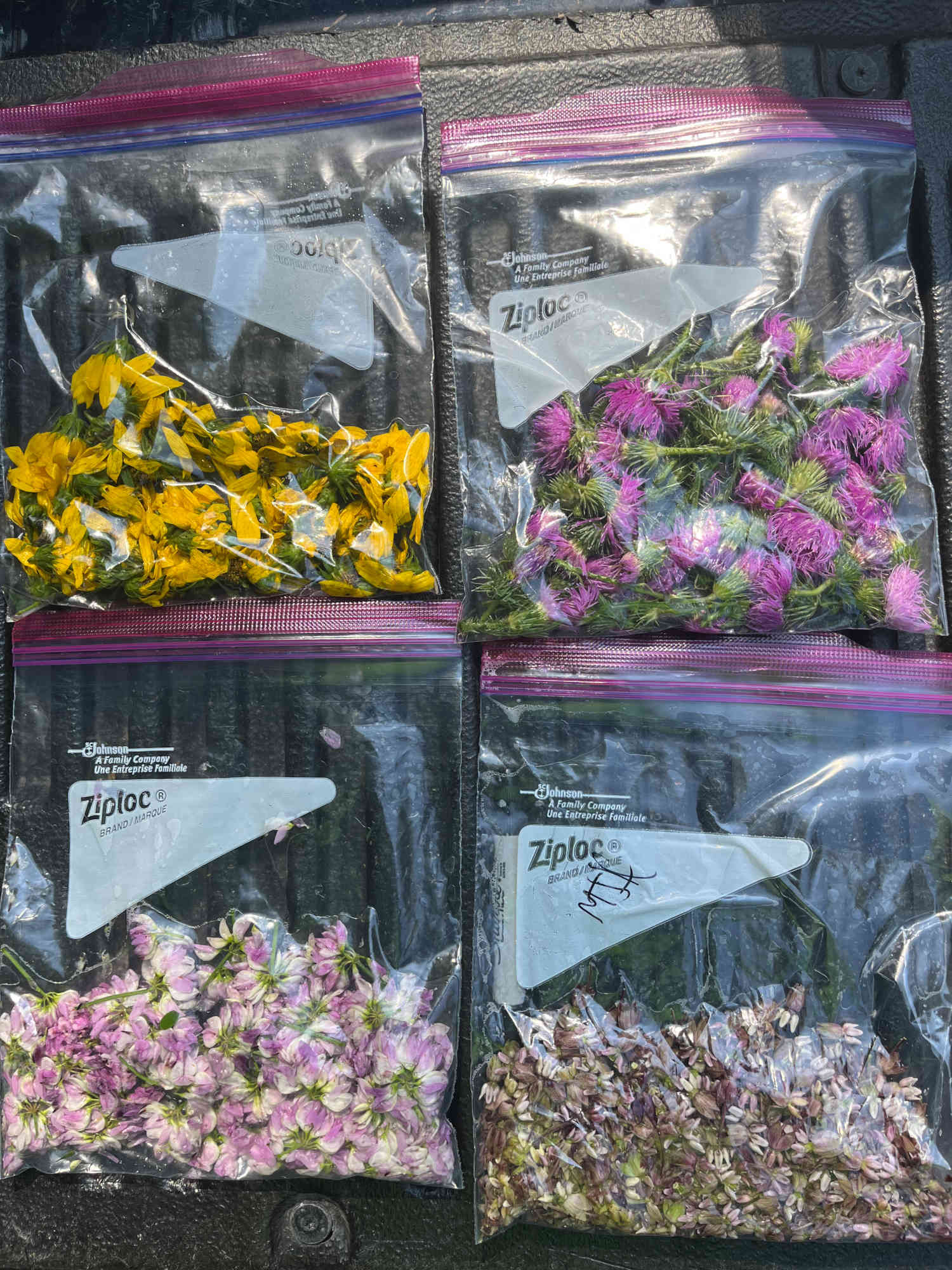
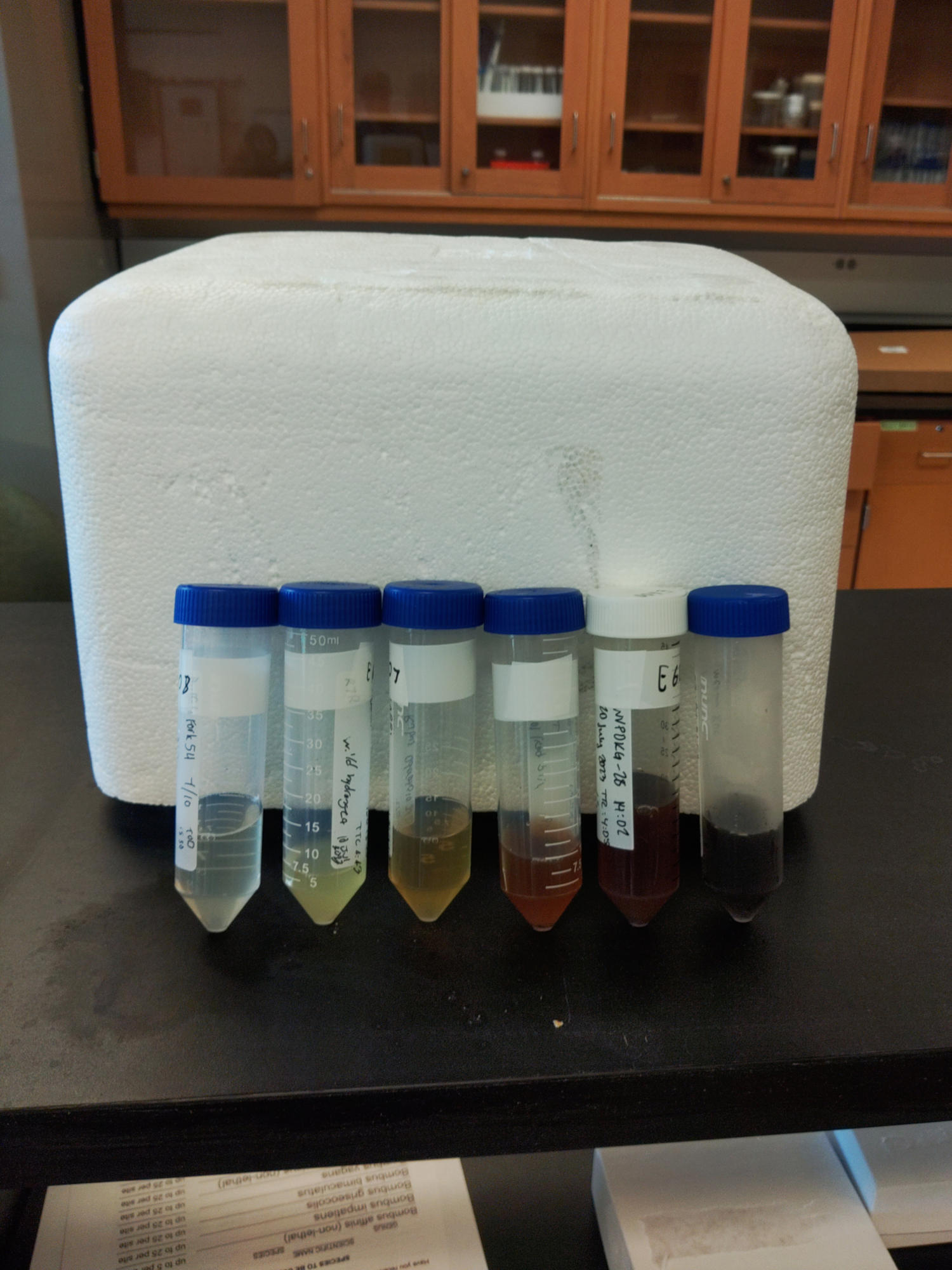
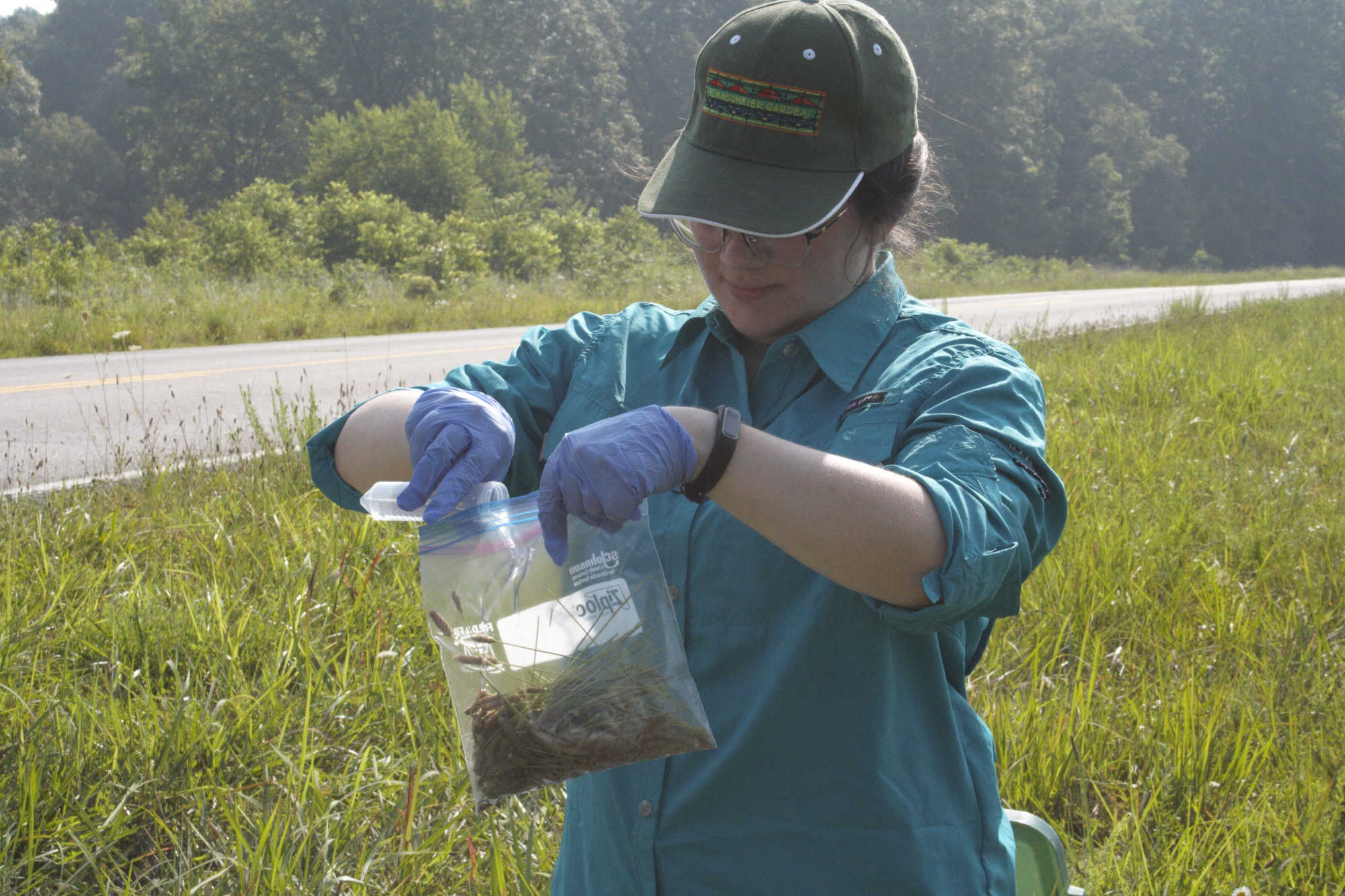
“I don’t think it’s ever going to replace good taxonomic experts with good natural history data going out and putting their eyes on different insects,” Goodell said. But she said eDNA might still serve as a complement, a sort of finger on the pulse. “At least it might be able to throw up some red flags for us that this is a place that we need to watch because we’re starting to see much less sequence diversity or something like that.”
Her sentiment underscored a broader truth: There are perhaps too few eyes on biodiversity, in general, and so two tools may be better than one, especially given the limited time some entomologists felt they had left. As Wagner put it, “There’s just too many insects in the world and not enough biologists.”
eDNA may serve as a guide in their search, not so much as scanning everywhere all at once but rather in training their sights on signals, however faint and distant. “The insect collapse is very heterogeneous in time and space,” Wagner said. “And eDNA is going to allow us to more quickly tell us about what taxa are declining and where they’re declining and perhaps help us identify what stressors that we need to focus greatest attention on.”


